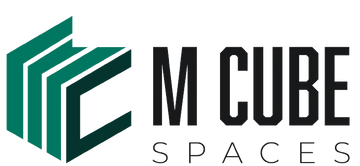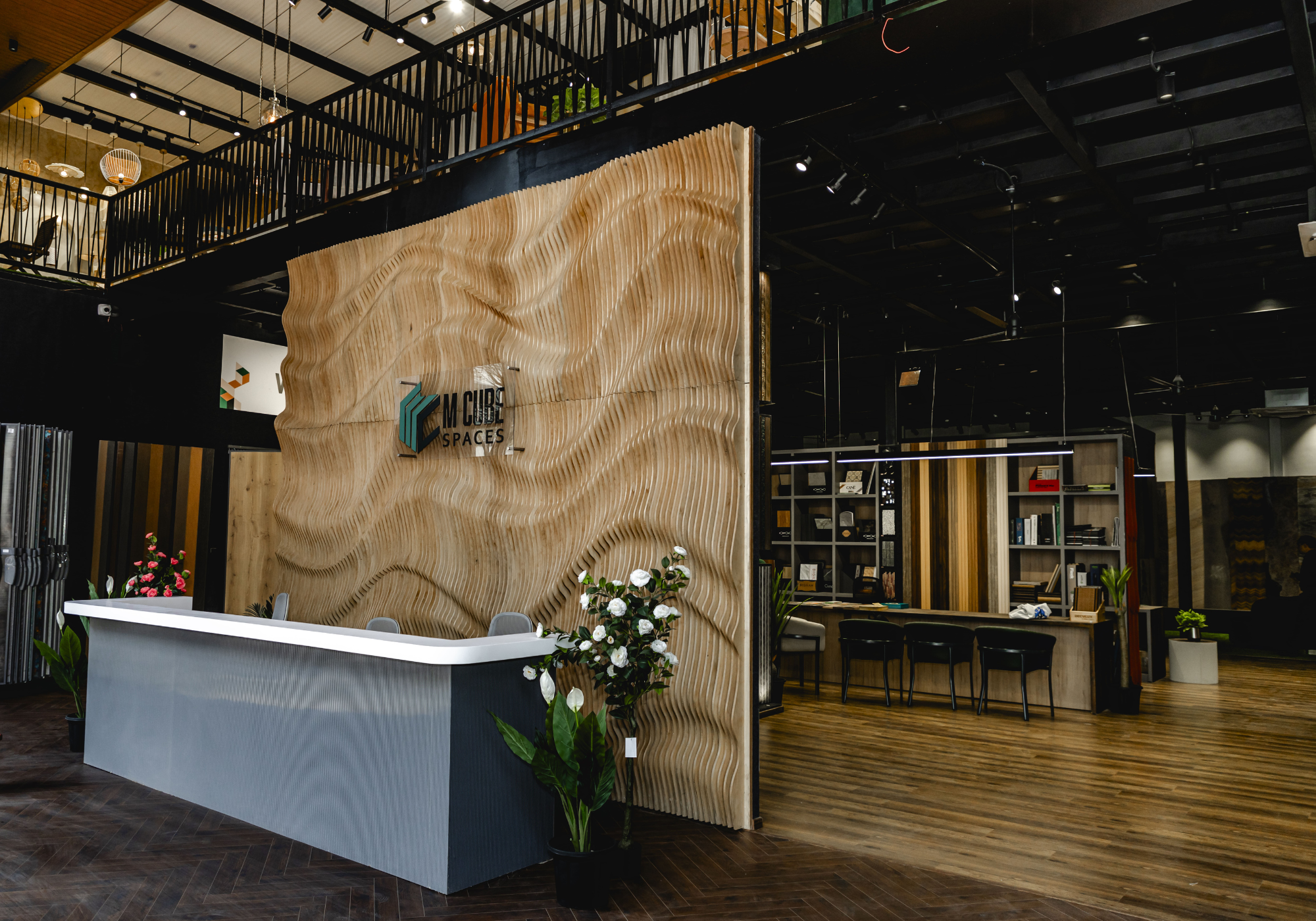Louvers have become one of the most expressive surface materials in contemporary interiors—bringing rhythm, depth, and refined structure to walls and ceilings. Whether it’s a luxury home, a boutique retail environment, or a modern office, louvers effortlessly combine aesthetics with practicality, offering designers and homeowners a way to create spaces that feel both sophisticated and functional.
What Are Louvers and Why Are They Popular?
Louvers, also referred to as rafters, are sleek, linear panels—installed vertically or horizontally—to add depth, rhythm, and structure to walls and ceilings. They bring a refined architectural character to interiors, introducing texture and balance without overwhelming the space. From subtle accent walls to statement ceilings, louvers are a versatile way to elevate modern interiors with a sense of sophistication and flow.
Beyond aesthetics, louvers offer functional advantages that make them a designer favorite. They can improve acoustics, and help define open layouts while maintaining a visual connection between zones. Thoughtfully placed lighting works beautifully with louvers, enhancing their lines and textures to create an inviting, layered atmosphere that feels both modern and warm.
Louvers—whether you call them louvers or rafters—offer endless design possibilities, making them suitable for a wide range of environments, from homes and offices to retail and hospitality spaces. Their versatility allows designers to explore patterns, lighting, and material combinations, creating interiors that are both cohesive and expressive. Whether used as wall highlights, ceiling accents, or space dividers, louvers bring a sense of continuity, warmth, and architectural harmony, transforming everyday spaces into thoughtfully designed experiences.
Different Types of Louvers Explained
At M Cube Spaces, our curated collection includes Charcoal, Real Wood, Pinewood, MDF, Fabric, Disco, and Flexible Louvers— crafted to suit specific design styles and performance needs. This guide explores their unique features, ideal applications, and how to choose the right material for your interiors, each suited to different needs, aesthetics, and budgets. Let’s explore how each type performs and where it works best.
1. Charcoal Louvers – Contemporary, Durable & Affordable
Charcoal louvers are one of the most popular choices for modern interiors—striking the ideal balance between affordability, performance, and style. Made from high-quality polymer composites, they’re moisture-proof, termite-resistant, and UV-stable, ensuring a long lifespan even in humid or sun-exposed conditions.
Their refined matte textures and clean lines make them perfect for TV walls, bedrooms, offices, or commercial settings that need a sleek, uniform look without the premium cost of real wood. Charcoal louvers are also easy to install and maintain, offering outstanding value for both homeowners and professionals seeking durable yet budget-friendly wall paneling.
2. Wooden Louvers — Natural Warmth That Never Ages
Nothing compares to the authenticity of real wood. Wooden louvers bring warmth, depth, and timeless character to interiors. They’re often used in bedrooms, living rooms, foyers, and hospitality projects where a cozy, welcoming tone is desired.
When paired with soft lighting, wooden louvers create an inviting glow that elevates both traditional and modern spaces. They can also be finished in different stains to match your interior palette.
3. Pinewood Louvers — Light and Airy Scandinavian Aesthetics
Pinewood louvers are known for their pale tones and clean grains—ideal for minimal, Scandinavian, or coastal-inspired interiors. They make smaller spaces appear brighter and more open, while maintaining a natural look.
Their lightweight structure makes them easy to install on ceilings or accent walls, and they can be polished, stained, or painted to complement different color schemes.
4. MDF Louvers – Versatile & Design-Forward
MDF louvers are favored for their smooth finish, color consistency, and high customization potential. They can be painted, laminated, or textured to align with any design palette—whether minimalist white interiors or bold accent tones.
Perfect for wardrobes, partitions, and retail displays, MDF louvers deliver a seamless, polished appearance that elevates everyday spaces. While they’re best suited for dry interiors, their versatility makes them a top pick for designers looking to experiment with finishes, color blocking, or geometric patterns.
5. Fabric Louvers — Soft Texture with Acoustic Comfort

Fabric louvers introduce a refined, tactile finish while improving acoustics. These panels reduce echo and enhance sound quality, making them perfect for home theaters, lounges, and hotel suites.
They also add a layer of softness and warmth, creating a balanced contrast when paired with harder materials like glass or metal.
6. Disco Louvers — Artistic, Abstract, and Expressive

Unlike conventional straight-slat panels, disco louvers feature irregular, asymmetrical, and sculptural patterns that catch and scatter light dynamically. These panels often combine metallic or mirrored surfaces for a vibrant, high-energy effect.
They’re the go-to choice for bars, clubs, retail showrooms, and statement walls where creativity and individuality matter. With the right lighting, disco louvers transform plain surfaces into eye-catching installations.
7. Flexible Louvers — Curved Elegance for Creative Spaces
Flexible louvers can bend around arches, pillars, and curved walls without losing continuity. They enable smooth, seamless transitions in interiors that play with organic geometry.
Whether used in reception counters, staircases, or ceiling designs, flexible louvers allow designers to achieve fluid movement within structured layouts—ideal for modern architecture and experimental interiors.
Where Can Louvers Be Used?
Louvers fit beautifully across different zones in homes and commercial environments:
-
Living Rooms & TV Units: Add vertical depth and highlight entertainment zones.
-
Bedrooms: Use as headboard or wardrobe paneling for warmth and symmetry.
-
Offices & Retail: Define spaces while maintaining openness; perfect for partitions or branding walls.
-
Restaurants & Hotels: Create ambience in dining areas or lobby backdrops with lighting integration.
-
Ceilings & Columns: Combine with soffit panels for a seamless ceiling-to-wall flow.
How to Choose the Right Louver for Your Space
Selecting the right material depends on your project’s style, maintenance expectations, and environment:
-
For durability and moisture resistance: Go for charcoal louvers.
-
For warmth and natural appeal: Choose real wood or pinewood.
-
For versatility and budget control: Opt for MDF louvers.
-
For acoustics and softness: Pick fabric louvers.
-
For bold statement designs: Explore disco louvers.
-
For curves or custom forms: Use flexible louvers.
If you’re unsure which finish suits your space best, it helps to see and feel them in person.
See It, Feel It, Design With It – At M Cube Spaces
At M Cube Spaces, we curate a diverse range of louvers that blend style, texture, and functionality. Our collection includes charcoal, real wood, pinewood, MDF, and flexible louvers, each selected for its distinct finish and design versatility.
Visit our 10,000 sq. ft. Experience Center in Bangalore to explore full-scale louver installations, experience textures and tones under natural lighting, and compare materials across multiple finishes and sizes. We also offer custom sizing and reliable delivery to meet the needs of every project.
Whether it’s for residential interiors, commercial environments, or hospitality spaces, M Cube Spaces helps you find the right louver design to enhance your walls and ceilings with warmth and character.
🛒 [Explore Louvers Collection]
📍 [Visit the M Cube Spaces Experience Center in Bangalore]
📱 [Chat with Our Team on WhatsApp]
📞 [Send an Enquiry]








